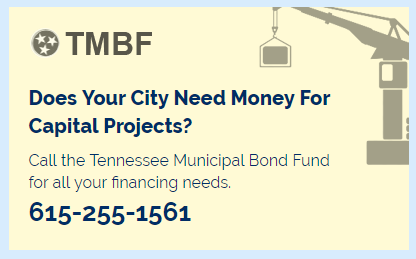Most Recent Action
Tenn Congressional Delegation Proposes Eliminatation of Costly Road Sign Replacement Deadlines, click here
FHWA eliminates lettering deadlines to traffic sign regulations
Cities to upgrade signs at end of life cycle
U.S. Transportation Secretary Ray LaHood announced that the Obama Administration is eliminating dozens of burdensome regulations on traffic signs which cash-strapped state and local governments expect will save them millions of dollars. The U.S. Department of Transportation is proposing that communities replace traffic signs when they are worn out rather than requiring signs to be replaced by a specific deadline. The proposed changes will eliminate 46 deadlines mandated by federal traffic control regulations.
In January, President Obama called for an unprecedented government-wide review of regulations already on the books. The purpose was to identify rules that needed to be changed or removed because they were unnecessary, out-of-date, excessively burdensome or overly costly.
"A specific deadline for replacing street signs makes no sense and would have cost communities across America millions of dollars in unnecessary expenses," said Secretary LaHood. "After speaking with local and state officials across the country, we are proposing to eliminate these burdensome regulations. It's just plain common sense."
The regulations establishing deadlines for street and traffic sign replacement came from the Manual on Uniform Traffic Control Devices (MUTCD), which is a compilation of national standards for all pavement markings, street signs and traffic signals. The Federal Highway Administration (FHWA), which has published the manual since 1971, updates it periodically to accommodate changing transportation needs and address new safety technologies, traffic control tools, and traffic management techniques.
FHWA issued a Notice of Proposed Amendments to eliminate 46 of the deadlines in the manual.
"Local and state transportation agencies are best-equipped to determine when they need to replace signs and other items in the course of their daily work," said FHWA Administrator Victor Mendez. "We are proposing these changes to give them the flexibility they need to balance their many responsibilities and make the best use of taxpayer dollars."
The deadlines requiring that certain street name signs be replaced by 2018 to meet requirements of larger lettering on those street name signs are among the series of deadlines eliminated under the amendment proposed The proposal would also eliminate deadlines for increasing the size of various traffic signs, such as ‘Pass With Care' and ‘One Way,' as well as warning signs, such as ‘Low Clearance' and ‘Advance Grade Crossing.' Instead, communities will be able to replace and upgrade these signs when they reach the end of their useful life.
The DOT has retained twelve deadlines for sign upgrades that are critical to public safety. These safety-critical sign upgrades include installing "ONE WAY" signs at intersections with divided highways or one-way streets and requiring STOP or YIELD signs to be added at all railroad crossings that don't have train-activated automatic gates or flashing lights.
Last November, FHWA published a request for comments in the Federal Register on deadlines and received almost 600 comments from highway agencies, state departments of transportation, other organizations, and private citizens. FHWA took these comments into consideration as it developed the Notice of Proposed Amendments. FHWA is also soliciting public comments for this proposed rule for the next 60 days, and comments should be directed to http://www.gpoaccess.gov/fr/
last updated 1/13/2012
Members of Tennessee's Congressional Delegation introduced legislation that would rollback an unfunded mandate on Tennessee local governments pertaining to new Federal standards for road signs.
The new requirements put forth by the Federal Highway Administration would mandate that Tennessee cities and counties update and replace road signs by 2015 and 2018 in order to meet minimum nighttime visibility standards (known as "retro-reflectivity") for traffic signs.
On June 16, U.S. Senators Bob Corker and Lamar Alexander introduced legislation to stop this unfunded mandate by the federal government by waiving the compliance dates and instead permitting state and local governments to comply with the new standards when they replace signs at the end of their normal life cycle. U.S. Representatives Scott Fleischmann and Chuck DesJarlais filed companion legislation in the House.
"Obviously, everyone wants our roads to be as safe as possible, but the arbitrary deadlines assigned by Washington amount to an unfunded mandate on local governments at a time when they can least afford it. Instead of asking local governments to shell out $50 million, it seems like a much more reasonable approach to replace road signs when they need to be replaced instead of an arbitrary deadline assigned by some Washington bureaucrat," Sen. Corker said.
"This is certainly a prime example of an untimely, unfunded federal mandate. Local governments have already had to tighten their belts and carefully manage every dollar in their budget. Unlike the federal government, most local governments have to balance their budget and can't engage in spending beyond their means. During these difficult economic times, I think it's simply unreasonable for the federal government to mandate a new standard to force the replacement of road signs that are still safe and usable. This bill is quite simple: it allows localities to replace signs at the end of their life cycle instead of forcing an unnecessary change that our local highway authorities neither need nor can afford at the present time," Rep. DesJarlais said.
The new FHWA standard is contained in the Manual on Uniform Traffic Control Devices (MUTCD), a compilation of national standards for all traffic control devices, including road markings, highway signs, and traffic signals. It is updated periodically to accommodate the nation's changing transportation needs and address new safety technologies, traffic control tools and traffic management techniques.
The updated rules raises the minimum reflectivity of road signs to increase sign visibility, especially at night. The sheeting used on traffic signs is "retro-reflective," which is designed so that light bounces back from the sign to enable nighttime visibility. Over time, the sign sheeting degrades.
Agencies were given until January 2012 to implement a method for maintaining traffic sign retro-reflectivity at or above the minimum levels. Traffic safety signs, such as stop and yield signs, must be replaced by 2015, and all signs must be replaced by 2018.
Future phases of the required upgrading will include changing the lettering on street name signs from all capital letters to upper and lower case letters and making the letters larger where necessary.
The potential impact on road and highway department budgets - which could be in the hundreds of thousands of dollars for some cities and counties - has spurred an outpouring of disapproval and concerns. Concerns expressed by state DOTs and local highway agencies prompted the U.S. Department of Transportation to open up a new round of comments about the potential impacts of compliance dates in the current economic downturn.
On the state level, Rep. Phillip Johnson, chairman of the House Transportation Committee, introduced HJR304 this year urging appropriation of adequate funding by Congress for local governments to implement the new minimum retro-reflectivity standards for traffic signs. Sen. Jim Tracy, chairman of the Senate Transportation Committee, presented this resolution in the senate. The resolution passed unanimously in both houses and was signed by Tennessee Gov. Bill Haslam on June 1.
Updated 6/22/2011
The MUTCD as published by the US Department of Transportation establishes standards for traffic signs on public roads.
Language adopted in 2002 requires all road signs to have a minimum level of retro-reflectivity by a certain date for all agencies that own and maintain traffic signs. In recent years, signs that have been replaced will meet these new requirements, older signs will not.
Some notable deadlines:
- By January 2012, all agencies will have to establish and implement a sign maintenance program that addresses the minimum sign retro-reflectivity requirements
- By January 2015, all agencies must comply with the new retro-reflectivity requirements for most of their traffic signs they have installed (excluding overhead and street name signs)
- By January 2018, all agencies must comply with the new retro-reflectivity requirements for overhead guide signs and all street name sign.
FHWA has been made aware of concerns by some state DOTs and local highway agencies about the potential impacts of MUTCD compliance dates in the current economic downturn, which has significantly reduced the resources available to public agencies.
On Nov. 30,2010, the Federal Highway Administration (FHWA) issued a Federal Register notice requesting public comment on compliance dates. The notice is not a rulemaking action. It merely solicits comments on the issues to help FHWA in analyzing the issues and in considering what actions, if any, might be advisable in the future. Comments are due by Jan 14, 2011.
The notice also includes a series of specific questions for which FHWA requests input on each. They are:
1. What, if any, difficulties does your organization anticipate in meeting the seven MUTCD compliance dates discussed above for upgrading existing non-compliant devices in the field?
2. Are there one or more of these seven compliance dates that are more problematic than the others for your organization? If so, which ones, and why?
3. If some or all of these seven compliance dates were extended, how long do you estimate it would take to complete the necessary traffic control device upgrades?
4. What safety or other impacts would result from extending some or all of these seven compliance dates?
5. Are there other MUTCD compliance dates not described in this notice that are problematic for your organization? If yes, which ones, and why?
6. What considerations should be applied to establish new compliance dates in the MUTCD?
7. What other comments or input do you wish to provide to FHWA regarding MUTCD compliance dates for upgrading existing traffic control devices?
FHWA is seeking comments from all interested parties to help FHWA in further examining these issues and evaluating potential future alternative courses of action, including additional rulemaking.
To review the Federal Register notice and to post comments, please go to www.regulations.gov and enter FHWA-2010-0159 as the docket number in the box labeled, Enter Key Word or ID.



